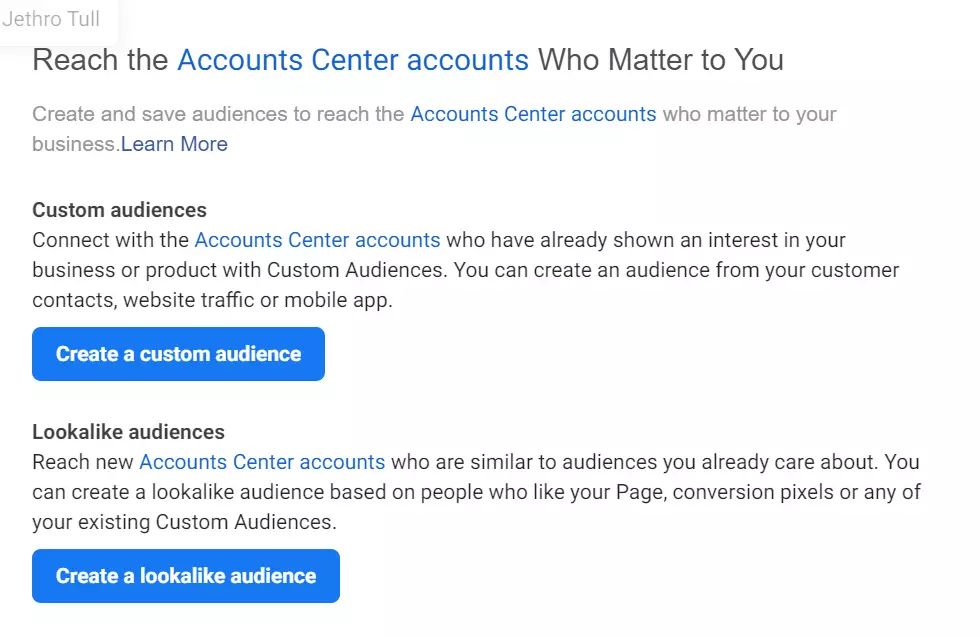Lookalike Audiences: How to Use Existing Data to Improve Paid Efficiency
Effective paid media campaigns check off three key boxes: Getting in front of the right audience at the right time at the right price. While it sounds simple, it’s far from easy. One of the most underutilized tactics is lookalike targeting, or using existing data to find users who look like your existing and past qualified users. Find out how to create a lookalike audience, where to use these audiences, and why this tactic is so effective.
What Is a Lookalike Audience?
Lookalike audiences are groups of people with interests, behaviors, or demographics similar to those you’ve already reached through marketing. Perhaps the most powerful element of lookalike audiences is that their association with your existing contact list is based on hard data, not assumptions. They’re based on tangible characteristics, such as:
- Purchase history/behavior
- Interests
- Website interactions
- Confirmed profile data (age, gender, location)
- Interactions with ads
- Pixel data (especially for social sites like Facebook and LinkedIn)
How to Create a Lookalike Audience – and What Platforms to Do It On
Luckily, you won’t have to reinvent the wheel. Most ad platforms – including most social media sites, certain types of campaigns in Google Ads, and email software – have a proprietary builder or native tool for building lookalike audiences. The tricky part is segmenting and refining your source or seed data first, then testing what works best based on performance data. The quality of your list will only be as good as your inputs, reporting, and iteration process.
If you need help, get in touch. Oneupweb’s paid media experts know how to make the most of an email list.
How to Create a Lookalike Audience in Facebook
We’ve focused on Facebook for these instructions because it’s a platform most businesses have been invested in over the long term, and there’s plenty of data to work with. While it may look different on a paid channel like Google Ads, building a lookalike audience from an email list for Facebook advertising has a relatively short learning curve; soon, it’ll be second nature for you!
Before you get started, make sure you have:
- Admin or ad manager access to the account you’re working on
- Billing information set up (and credit card linked to the account)
1. Log into your Facebook Ads Manager account
Once in the Ads Manager interface, select Audiences, then Create a lookalike audience.
Note that lookalike audiences will target accounts similar to those already interacting with your page.

2. Select a lookalike source.
If you have a Facebook pixel installed on your site, you can use website traffic to build an audience. While many brands start by using their Facebook page as a source, you can also use:
- Data from an application you own
- Customer list (including email list)
- Instagram account data
- Facebook shopping data
- Lead forms
- Video data
- Facebook listings from Marketplace
3. Choose an audience location.
For brick-and-mortar stores or service businesses, location is everything. Target users within a realistic radius of your business or get hyper-focused on specific communities. Get creative here! For example, some quick-service restaurants, like coffee shops, will target suburban communities that travel on a particular highway to the metro center. Pretty smart!
4. Select audience size.
This is the most important step! Facebook offers lookalike audience sizes on a percentage-point basis. A 1% lookalike consists of people most similar to your audience. As you expand toward 10%, your audience gets less specific; as quantity increases, quality decreases. We recommend lookalike audiences in the 1-5% range.
5. Create your lookalike audience.
Once you’re happy with your parameters, select “Create your lookalike audience.” Facebook will populate the audience over the next few days, but you can use it for ads right away.
Before you create a campaign with your new audience, take a second to look at your estimated audience. If the number is much higher than you expected, see if there are opportunities to shrink the audience by editing the list. Navigate to Actions at the top of the audience screen and select Edit.
Using an email list for Facebook Ads is a smart way to use quality data to improve overall marketing efficiency.

Pro tip: To keep your Lookalike audience as a true lookalike audience – an audience to find new customers and not a remarketing audience – don’t forget to exclude your seed list in the Audience builder.
Do Lookalike Audiences Work?
Absolutely! Lookalike audiences offer marketers several advantages as long as they’re built with clean contact lists and user behavioral data.
Just a few of the benefits of lookalike audiences are:
- Time – Lookalike audiences eliminate the need to research new customers; Facebook’s algorithm has mountains of user data and connects the dots for you.
- Specificity – Lookalike audiences reach the most qualified users, improving paid efficiency by focusing on a smaller, more well-defined audience.
- Multichannel – With the right set-up, you can use website data to improve Facebook ad performance or your email list to improve PPC results. Lookalike audiences make all data sources more valuable!
In most cases, lookalike audiences are most effective for brands with high-quality data sources and the bandwidth to manage campaigns and actively monitor performance. Oneupweb uses lookalike audiences to deliver cost-effective results for our paid media clients across industries, whether as the lynchpin of the strategy or just one of many angles we’re playing.
Put Your Data to Work with Oneupweb
From creating lookalike audiences to managing event tracking, Oneupweb looks like a winner. For nearly thirty years, we’ve helped brands across industries gather and leverage data to improve marketing results. We put together hand-picked teams with the skills and experience to support your long-term success. See what’s possible with Oneupweb – get in touch or call (231) 922-9977 today to get started!
